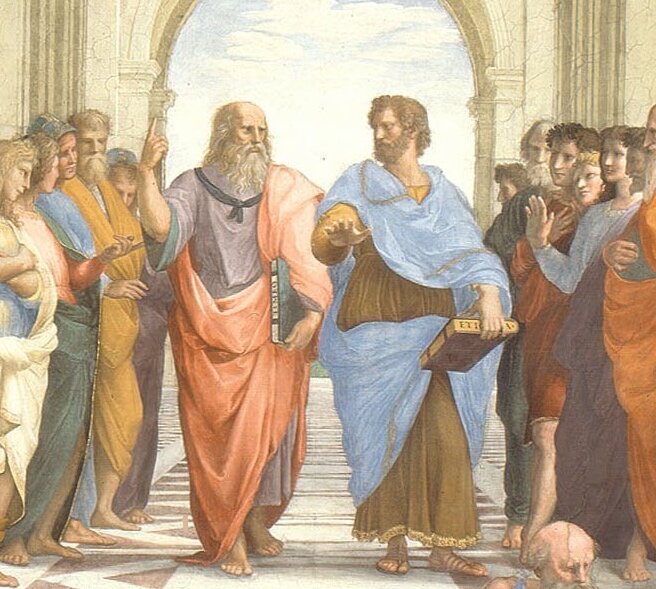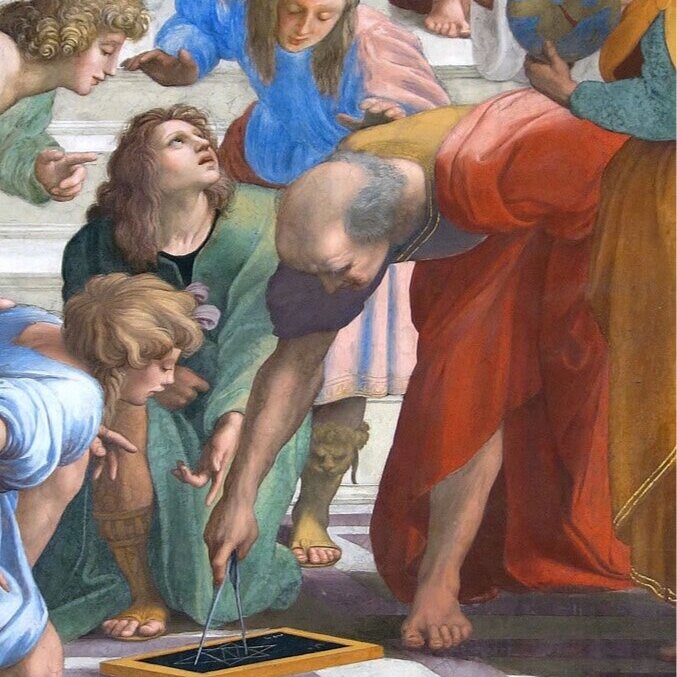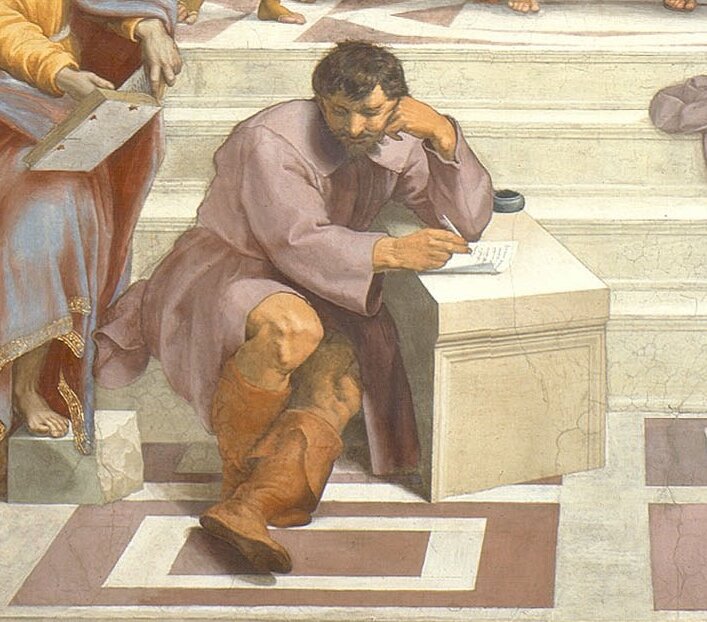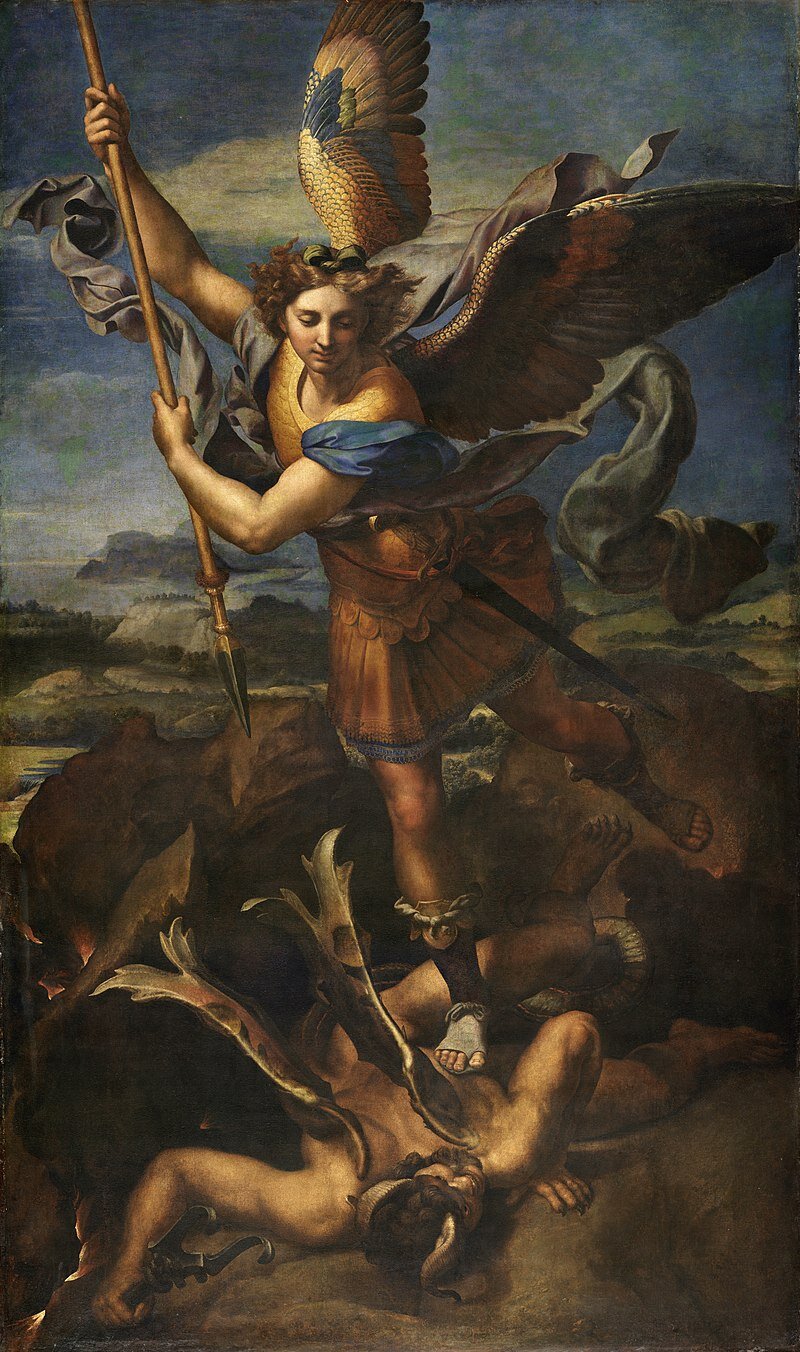Self-portrait, 1506 (he’s 23 here)
Now that I’m preparing to hit the road on book tour with my new Raphael novel, I notice a lot of fans giving me the same look when I tell them the subject of my next novel. They recognize his name — “Raphael, Raphael…? Isn’t he a Teenaged Mutant Ninja Turtle??” — and most know he’s a famous painter. Often people know he’s from the Italian Renaissance, but many can’t immediately visualize his paintings…
So for those of you who would like a quick reminder of who Raphael is and what he painted, here are the Top 20 Raphael paintings I think you should know. (I know, I know, usually a list like this is a “Top 10” list, but I could not narrow it down that far; I had a hard time picking my top 20! He simply made too many masterpieces!)
So, here are my Top 20 “Must See” Raphaels
Triumph of Galatea
in the Villa Farnesina in Rome
I had to start with the painting that became the cover of my novel. Raphael painted this fresco in a palace owned by one of the richest men in Rome at the time, Agostino Chigi. In this fresco, Raphael doesn’t tell the sad version of Galatea’s story: the mythological sea nymph who fell in love with the mortal shepherd Acis, only to have the jealous Cyclops Polyphemus kill him. No. Instead, Raphael chose to celebrate the mythological Galatea (riding along in her shell chariot pulled by a dolphin) in an explosion of sea creatures and shells and cherubs and colors… Santa Madonna, those colors…
Sistine Madonna
Today, found in the Gemäldegalerie Alte Meister in Dresden, Germany
A lot of people don’t realize that those incredibly famous angels — the putti — come from a larger painting, but there they are at the bottom of the Sistine Madonna. This was the last painting that Pope Julius II commissioned, intended as the altarpiece for the church of San Sisto in Piacenza. Those two putti are the most famous part—and they are worth a thousand looks—but I also encourage to look closely at the powerful beauty of the Madonna and Child flanked by Saint Sixtus and Saint Barbara. They look out at us with this sense of… what is that? Fear and knowing? It’s as if they know what their future holds—the attacks, the suffering, the crucifixion—and yet they walk knowingly into that struggle…
The School of Athens
in the Stanza della Segnatura in the Raphael Rooms in the Vatican
This painting was not called The School of Athens until a 17th century guide book for Rome named it so, but the fresco itself has been famous since Raphael painted it in the pope’s private apartments when the artist was still in his 20s. It’s the pinnacle of perfection in Renaissance painting and includes portraits of many famous faces including (from left to right above): Leonardo in the pink tunic as Plato, Bramante as Euclid bending over to draw, Raphael himself peering out from the far right, and—my favorite—Michelangelo as the grumpy, pessimistic Greek philosopher, Heraclitus.
Disputation of the Holy Sacrament
on the wall opposite of The School of Athens in the Stanze della Sengatura
This was the first major fresco Raphael painted upon arriving in Rome when he was just twenty-five years old (he first painted a section of the ceiling in the same room to win the right to decorate the walls). This vision of heavenly and earthly figures—talking, moving, gesturing in an explosion of humanity—dazzled its patron Pope Julius II and convinced everyone inside the Vatican that Raphael was a worthy opponent to the artist working just down the hall: Michelangelo, who was, at the same time, painting the ceiling of the Sistine.
Self-Portrait with a Friend
This painting, which now lives in the Louvre, was painted in 1520—just before Raphael died at the age of 37. He’s the one looking out at us, standing behind his friend (Of course, he is. Raphael always paints himself in corners, standing behind others). I’ve stood for hours in front of this painting (while the rest of the crowds are in the room next door ogling over Leonardo’s Lisa), communing with the artist, painted in the moments before he left this world too soon.
La Fornarina
Margherita Luti, the Baker’s daughter, Raphael’s muse and the love of his life. Here she is in all of her glorious beauty (this portrait lives in Rome at the Palazzo Barberini). The band on her left arm bears the artist’s name: is it a sign that he felt ownership over her? There are rumors that they were secretly married, and as proof, some historians point out that when Raphael died (after an exceptionally long bout of lovemaking with her that exhausted him), Margherita went into a convent. He also painted a ruby ring OUT that once encircled her left ring finger… Whether she was his wife or not, she was the model for some of his most famous works.
La Velata
Another stunner of a Margherita Luti portrait (this one found in the Pitti Palace in Florence), where Raphael captures a bit of her soul (and that FABRIC)! This is considered by many historians as Raphael’s response to Leonardo da Vinci’s Mona Lisa… I don’t know about you, but I think that this is the most beautiful portrait in all of history.
The Lamentation
aka, the Baglioni Altarpiece in the Galleria Borghese in Rome
This melodic altarpiece was commissioned by the Widow Baglioni to honor her son, Grifonetto Baglioni who had died during the infamous Red Wedding of 1500 in Bologna, when one half of the Baglioni family murdered the other half in an attempt at a coup during a family wedding. To honor the widow and her son, Raphael used their portraits in the picture: The Virgin Mary (fainting into the arms of her supporters) has the face of the widow Baglioni and Christ—being carried off to his tomb—has the face of her son.
Portrait of Pope Julius II
This famous portrait of this famous pope (which now resides in the National Gallery of Art in London) is one of Raphael’s most fascinating paintings to me. When it was unveiled, contemporaries claimed that this portrait frightened them—that they could feel the pope’s famous anger wafting off the paint. Really? LOOK at this painting. Does Pope Julius II look so “terrible” to you? No. He looks like a fragile old man, clinging to life. So why did Raphael’s contemporaries imbue this painting with such anger? I have MY thoughts on the subject, but there’s not enough room here to go into it, so… I guess you’ll have to read my novel to find out…
Portrait of Pope Leo X
This is Raphael’s SECOND portrait of a pope (this one at the Uffizi in Florence). That’s right, Raphael was so good at his job that not one pope but TWO popes (and the only two popes Raphael ever worked for) hired him to paint their portrait. This portrait is of the Medici Pope (Giovanni de’Medici, son of Lorenzo “Il Magnifico” de’Medici), painted in honor of the pope’s nephew’s marriage; Pope Leo couldn’t attend the ceremony, so he sent this portrait in his place!
Three Graces & Sleeping Knight
Okay, okay, this entry is really TWO paintings (Three Graces lives in Chantilly, while Sleeping Knight is held by the National Gallery in London), but they are widely believed to be part of the same diptych, so I felt good about including them TOGETHER. There’s MUCH debate over the meaning of these two panels, but one thing is certain: they were painted when Raphael was only 20years old, and their grace, beauty, and flow prove his prodigious talent.
Portrait of Bindo Altoviti
If Bindo—a wealthy papal banker—had been alive today, he no doubt would’ve been in the movies, right? I mean LOOK him. Step aside Brad Pitt, this may be the most handsome man in pictures. Visit him in person at the National Gallery of Art in Washington, DC to really appreciate this stunner. The funny thing to me is: Raphael gives Bindo the same look, same eyes toward the viewer, same feeling of PEERING out onto the world as he often gives himself when painting his own self-portrait. Did he see himself in Bindo? I like to think so.
St. Catherine
From the most beautiful man to one of the most beautiful women ever captured in paint. This is a portrait of fourth-century princess Saint Catherine of Alexandria (this painting also lives in the National Gallery in London) who converted to Christianity and had a vision of her own mystic marriage with Christ. When she refused to give up her faith, she was martyred, This twisting, monumental woman echoes the figures of the great painters that Raphael idolized: his teacher Perugino, his mentor Leonardo da Vinci, and yes, his rival, Michelangelo.
Portrait of Baldassare Castiglione
This portrait (now in the Louvre) proves that Raphael was arguably the greatest portraitist in history (well, at least, until Rembrandt painted nearly 150 years later). This portrait is of one of Raphael’s friends, the writer Baldessare Castiglione. When Castiglione wrote his Book of the Courtier (a dialogue describing the ideal courtier) Castiglione supposedly had one real-life courtier in mind as his model for perfection—his friend, the painter Raphael.
Marriage of the Virgin
Raphael’s is held by the Pinacoteca di Brera in Milan
Do these two paintings look similar to you? One version is by Pietro Perugino and one is essentially a copy by his young protege, Raphael. Raphael took his maestro’s painting and improved upon it — making the colors burn more brightly, the figures move more freely, the space recede more deeply, the temple in the background rise more lightly into the sky… Can YOU tell which one is the teacher’s and which is the ambitious student’s?
Madonna della Seggiola
I LOVE this tondo (visit her in the Pitti Palace in Florence). There are several legends concerning this painting but my favorite version: a woman came upon a holy man dangling up a tree, as a pack of wolves barked and snarled below. The lady chased off the wolves and rescued the holy man, who, in thanks for his life, blessed both the tree he’d hidden in and the woman who had saved him, promising that they would both be famous forever. This painting is supposedly the fruition of that blessing. The woman posing as the Madonna is the woman who saved that holy man and the wood that makes up this round panel came from that life-giving tree.
Large Cowper Madonna
From one Madonna to another—appropriate for a painter who is arguably best-known as a painter of perfect Madonnas. Inclusion of this particular Madonna is probably evidence of my own bias. This painting — held at the National Gallery of Art in Washington, DC, where I used to visit at lunch everyday when we lived in DC — makes me laugh every time. That little Christ child is the BEST. I love his face, his cheeks, his laugh, his little pudgy body… and I adore the way his Mother looks down at him with pure admiration at her funny, rambunctious, mischievous child.
Expulsion of Heliodorus
also in the Raphael Rooms in the Vatican
We’re back nearly where we started, with another painting from the Raphael Rooms in the Vatican. This one tells the story of the Syrian Heliodorus, sent to take money from the Temple in Jerusalem, so God sent an angel to drive the thief away… The explosion of space—the lack of figures in the middle, everyone violently pushing out toward the sides—is not only great way to capture the drama of that Biblical story, it is always a great way to capture the EXPLOSION happening in art at this time. Raphael painted this fresco right after the first half of Michelangelo’s Sistine Ceiling was revealed… THIS is Raphael’s artistic response to his rival’s explosive work.
St. Michael
both versions in the Louvre
Yes, yes, once again here’s TWO paintings in one entry… But it’s the same scene executed at very different times in Raphael’s life. The one on the left is a small-panel of St. Michael Overwhelming a Demon that Raphael painted when he was about 20 years old—young, he hadn’t yet moved to Rome, hadn’t yet faced off against his OWN demons. The one on the right (St. Michael Vanquishing Satan) is a large painting executed when Raphael was in his mid-thirties... Just two years before he died. I’m partial to the large, later one (I really only included the earlier version so you could see his growth at the same subject). The second version captures Raphael’s passion, confidence, and ability to vanquish even the most powerful of rivals.
The Transfiguration
This is arguably the greatest painting of the High Renaissance, the greatest painting in history. For 300 years after this painting — until the pre-Raphaelites strove to return to the days BEFORE Raphael achieved perfection and bent past it, and then the Impressionists rebelled against the Old Masters to go their own way — EVERY ARTIST strove to try to get close to the wonder that is Raphael’s Transfiguration. If you can only see one Raphael in person, get yourself to the Vatican to stand in front of this masterpiece of the divine and temporal, drama and peace, the weight and reality of those figures, that boy writhing in demonic possession, the twisting, turning, the light, the shadows, the COLORS… Santa Madonna, those colors…
There are SO MANY MORE Raphael masterpieces to know. But I hope this gives you a start and leads you down a rabbit hole of learning more and more and more about this Renaissance painter of perfection.





























